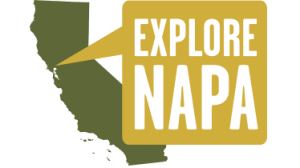The biggest bait and switch ever. When my family recently moved, my wife was brand loyal to Allstate, with us choosing them for home & auto, despite more favorable quotes. Their Drivewise program brought their rates with 10% of the competition (higher, that is), so we opted for them. My wife assured me that our middle-aged lifestyles, relatively modest driving miles and habits should stand us in good stead.
Drivewise is simple. You invite big brother (in this case, Allstate) to monitor your driving, starting you off with a 15% discount, then reducing that discount if you engage in unsafe behaviors, such as hard braking or speeding, then you won’t get as much a discount. What they don’t tell you before you sign up is that driving during certain times of day is considered “unsafe” or that driving itself is unsafe. Of course, they have a point, if you drive your car, you increase the risk of an insurance payout. But, then again, there is really not much of a point to buying insurance for a car you aren’t going to drive, is there?
Anyway, we learned all the details once we’d signed up. I was pretty sure we’d fail at that point, but my wife insisted that we give it a try. It was not so bad, at least at first. In fact, I must admit that it was pretty cool monitoring my driving. I could see my driving habits, over 6 months no less. And, in theory, I could compare myself to other customers.
The verdict: the Drivewise algorithm quite obviously rewards you *only* if you don’t drive and if you do, then it rewards you only if you drive on the weekend or prior to noon on any given day. If you work for a living, ever have to leave for an early morning flight, or ever drive over 80 MPH, or drive more than 150 miles per week, your discounts disappear and your insurance rates will increase.
So what are my stats, according to drivewise?
Mileage:
I drove less than 5000 miles in 6 months (about 850 miles per month, or about 10,000 miles per year.) So, how did this stack up in the Drivewise algorithm? I got a “C” in the bottom 27% of Drivewise customers. How do I compare to other Americans? The average American drives about 13,500 miles per year. The average American man drives more than 16,000 miles per year; the average American between 35 and 54 drives more than 15,000 miles. In other words, I drive less than most Americans, but am in the bottom of the Drivewise pool, lowering my “discount.”
Speeding:
Drivewise keeps a record of your speeding if you exceed 80 MPH. That would seem reasonable in the Midwest or East, where limits are 65 MPH, but in the west, much of the country is governed by a 75 MPH speed limit. Still, I managed to drive just 2. 5 miles above the 80 MPH high speed limit. That’s 2.5 miles of about 5000 miles. That is .05% of my mileage. That’s ridiculous. When I’m heading from Phoenix to Flagstaff on I-17, the traffic moves at 85; when a huge truck is barreling down a 7% grade behind you at 85 MPH, you don’t really worry about your Drivewise. You speed up and move over safely. So, how does Drivewise assess my incredible record of obeying speed limits? I earn a “B,” in the bottom 40% of Drivewise. Again, my “discount” was lowered.
Time of Day
Drivewise divides the time of day in which you drive into four periods, listed from “lowest risk” to “highest risk”: “lowest risk”–weekends from 5am – 11pm; “low risk”–weekday mornings from 4am – 12 noon; “moderate risk”–weekdays from noon-11pm; “highest risk”–weekdays from 11pm-4am and weekends from 11pm-5am. At some levels, it makes sense, except that anyone driving to work will spend most of their time balancing between low and moderate risk. And, anyone who regularly travels to airports very early in the morning or late at night (the only reason that I’m out at those times anymore, else I’m in a cab), will experience the highest risk category. In 6 months, I’ve made two trips to the airport, at a high risk time–once because of a flight delay that arrived at midnight, and another time when I had to arrive at the airport at 5am on a Saturday morning. The consequence: a low rating, of course. I earned a “C+,” putting me in the bottom 30% of all drivers. I drove a grand total of 108 miles (out of 5000), or just over 2% of my miles, in the “highest risk” category. The rest of my miles were evenly split between the moderate risk category (about 50%) and the lowest risk (20%) and low risk (30%) categories. And, you guessed it, another instance in which my “discount” was lowered.
So, you do the math here. My driving seems pretty typical, both in time of day (anyone who works will spend most of their time in the low and moderate risk categories), with an occasional trip in the highest risk zone. My wife’s profile is remarkably similar to mine, though she only drove 2 miles in the highest risk category (and received an “A,” putting her in the top 10% of drivers.) She was dinged significantly, though, for driving her car below the national average.
Finally, they have a category called braking. I’ll spare the details, but suffice to say we are in the B-range there. I will only point out that when I had my breaks done (and then redone), the mechanics accounted for about 1/4 of my “hard braking” and “extreme braking” events.
Anyway, now that the 6-month review period is up, our rates have increased by about 17%. (Remember your math? They give you a 15% discount off a higher rate, so when your rates increase it is actually by slightly more than 15%.)
My wife called. She explained that Drivewise is really a bait-and-switch con, and that they should honor the lower rate. The response was “sorry, we can’t do that–how about we raise your deductible, etc.?” My spouse’s response. Your rates are already higher than the competition, and you’re about to lose a 15-year+ client. Allstate: “Sorry. You have to do what you have to do.”
God news, we’re switching to Safeco or one of the other companies, such as Geico, State Farm, or Progressive. All of them had rates lower than Allstate’s. They’re also not building business around a con. And, overall, we’ll be saving about 1/3 for home & auto. I strongly recommend shopping around, and under no circumstances should you ever use Drivewise.


 University of Nevada, Reno. All of us work closely with libraries–in Cleveland the Cleveland Memory Project has been vital, as have countless smaller archival and libraries. The same is true here in Tempe, with Salt River Stories. (Erin Bell, everyone’s favorite Omeka programmer, is a training information scientist.)
University of Nevada, Reno. All of us work closely with libraries–in Cleveland the Cleveland Memory Project has been vital, as have countless smaller archival and libraries. The same is true here in Tempe, with Salt River Stories. (Erin Bell, everyone’s favorite Omeka programmer, is a training information scientist.) We’ve appreciated our partners leadership in the
We’ve appreciated our partners leadership in the